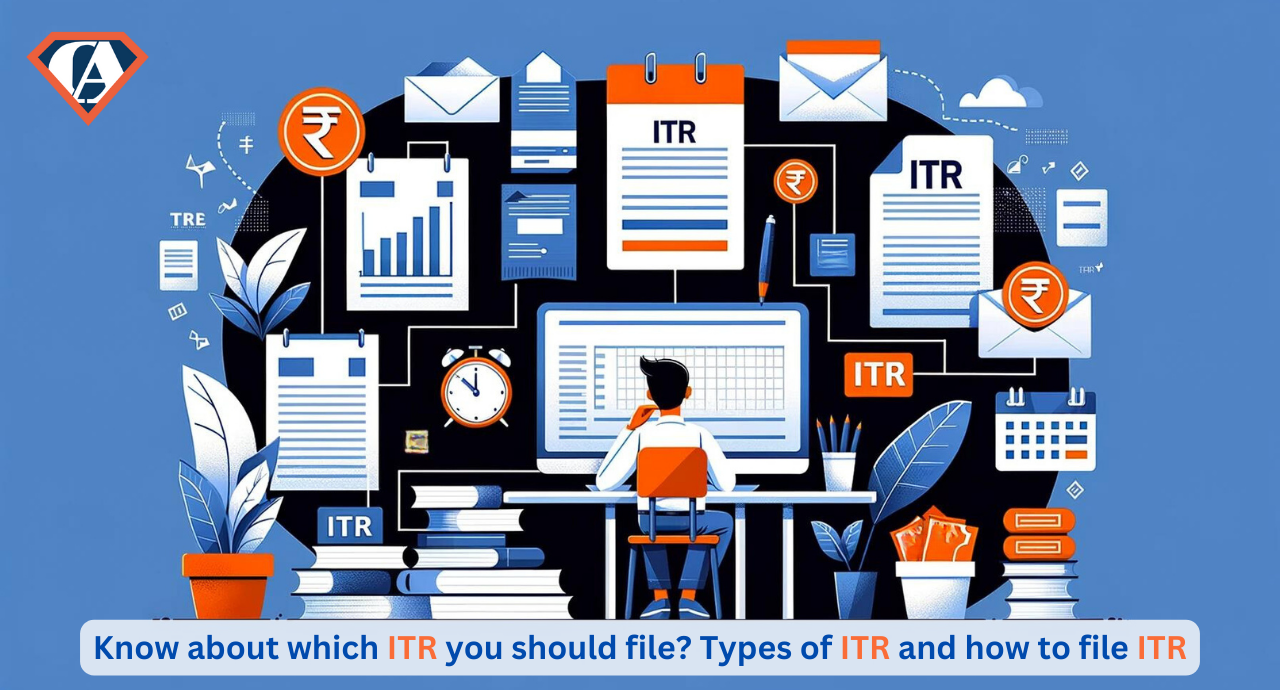ITR - Know about Which ITR You Should File? Types of ITR and how to File ITR


Filing Income Tax Returns (ITR) is a fundamental duty of every taxpayer in India. It not only contributes to the nation's development but also provides an official record of an individual's income and tax payments. This blog aims to demystify the process of determining which ITR form suits your needs, the different types of ITR forms available, and how to file your ITR correctly and efficiently.
The Income Tax Department has designated various ITR forms for different types of taxpayers based on their income sources, amount of income, and category:
Each form caters to a specific taxpayer category, making it crucial to understand which form aligns with your income structure.
Selecting the right ITR form is critical for compliance with tax regulations. Here's how to determine which form you should file:
Understanding these factors will guide you in selecting the appropriate ITR form for your situation.
Filing ITR online, also known as e-filing, is a straightforward process:
To file your ITR smoothly, keep the following documents ready:
Having these documents at hand will make the ITR filing process more efficient.
Ensure a hassle-free filing experience by avoiding these common mistakes:
Understanding which ITR form to file, preparing the necessary documents, and following the step-by-step guide to e-filing can simplify the tax filing process. By being mindful of common mistakes and ensuring accurate and complete information, taxpayers can fulfill their obligations with confidence and ease.
This comprehensive guide aims to equip you with the knowledge needed to navigate the ITR filing process, reinforcing the importance of timely and accurate tax compliance.
A1: Yes, you can file a nil return if you have no income. Filing a nil return can be beneficial for maintaining a continuous financial record, especially if you plan to apply for loans or visas in the future.
A2: If you select an incorrect ITR form, the Income Tax Department may notify you of a defective return, and you will be given an opportunity to rectify the error by filing a revised return with the correct form.
A3: The deadline for filing ITR varies each assessment year but is typically July 31st for individuals. However, it is subject to extension by the IT Department, so always check the latest notifications.
A4: Yes, you can file a belated ITR until December 31st of the assessment year, but it may attract a late filing fee.
A5: Not filing ITR can result in penalties, interest on taxes due, and you may also miss out on carrying forward certain losses to future years.
A6: ITR can be verified electronically via Aadhaar OTP, EVC through your bank account, or by sending a signed physical copy of ITR-V to the Central Processing Centre in Bangalore within 120 days of filing.
A7: If you discover a mistake after filing your ITR, you can file a revised return correcting the errors. The revised return can be filed any time before the end of the relevant assessment year or before the completion of the assessment, whichever is earlier.

|
Essential LLP Registration Documents: A Complete Checklist for Entrepreneurs Author: Rahul Singh 04 Apr, 2024
|
Get inspired by these stories.